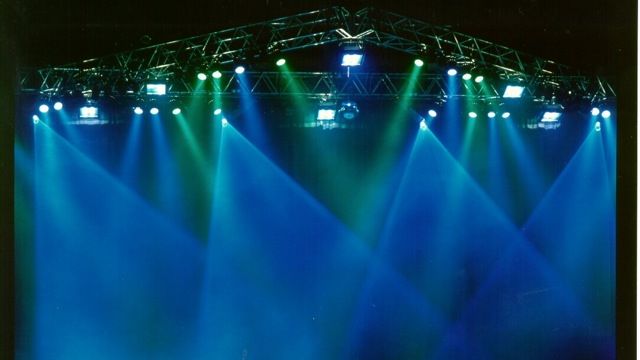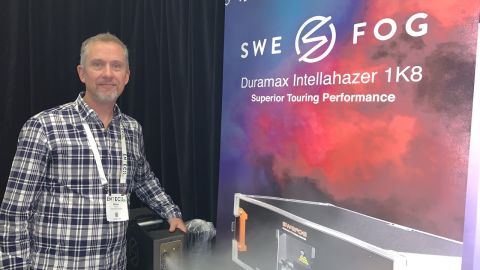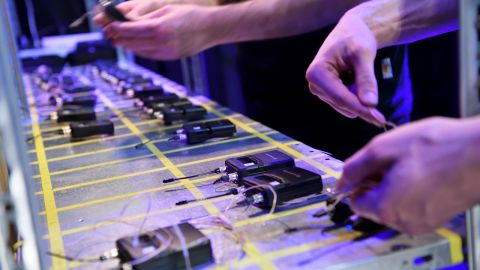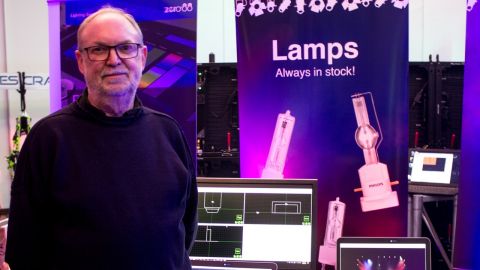See Problems before you have to light them

By Matt Caton and Marcus Pugh
“Failing to prepare, is preparing to fail.”Man, I don’t know who came up with that saying but I reckon if I ever hear it again, the person responsible could be in for quite the rant.
What’s more annoying is that the above saying is pretty much fundamentally accurate in just about any working situation, and planning your Lighting Design is no different. There is no ‘right way’ or ‘wrong way’ to go about bringing a theatrical Lighting Design from the drawing board to the stage, but there are some basic rules and guidelines that, if followed, should ensure that the experience doesn’t have to be a harder than it already is.
Planning
Planning and a productive pre-production period is the best way to avoid future problems, but it is very important to not get bogged down in the finer details and to keep your eye on the ‘big picture.’
 The most important element in the early stages of a Lighting Design is your venue. Find out every single thing you need to know, and this means more than just what lights you have to work with. Think about access, i.e. can the vehicles get to the loading dock easily? Is the loading dock in a close proximity to the stage? How do you access the lighting bars to focus your rig? Will you be using a ladder or scaffold and if you are, will it be already set up for you? How many patch points and dimming channels does the venue have? Is there further access to 3-phase power? These are just some of the essential questions you need to get answered.
The most important element in the early stages of a Lighting Design is your venue. Find out every single thing you need to know, and this means more than just what lights you have to work with. Think about access, i.e. can the vehicles get to the loading dock easily? Is the loading dock in a close proximity to the stage? How do you access the lighting bars to focus your rig? Will you be using a ladder or scaffold and if you are, will it be already set up for you? How many patch points and dimming channels does the venue have? Is there further access to 3-phase power? These are just some of the essential questions you need to get answered.
The next important step is to actually watch full rehearsals. Many designers feel that they can watch the odd rehearsal, get a feel for the show, and then design accordingly. This is not only lazy, but will result in difficulties down the track. It is very important to have seen the show from start to finish, before you start putting a design together. And this leads to the most important part; don’t ‘design on the fly.’ Even if it is a small two-hander play, with four lighting cues, you should have at least the basis of the design done before you enter the venue. However, with this being said, you should also leave some room for flexibility, as you never know what can happen once the show is in the venue.
Once you know all the finer details of the venue, have seen the rehearsals and begun your design, it’s time to put together a bump-in schedule. This again, requires careful planning but above all some flexibility. Even in the most meticulously planned bump-in, unforeseen issues and roadblocks can and will arise.
 In the Venue
In the Venue
With the buzz, excitement and the sometimes horror of bump-in weekend, a few very simple things can be forgotten. The most important things can be the simple stuff; i.e. make sure your crew has regular breaks and are well fed. A cigarette and Red Bull doesn’t count as food; sandwiches and fruit are ideal. Nobody functions properly on an empty stomach, and your mountain of problems before lunch can seem like a mole hill after you’ve eaten. Plus, we all know that low blood sugar and fatigue have been the cause of many unnecessary backstage yelling matches.
Good designers and technicians all agree that you should always ‘flash out’ your lamps before rigging or sending the bars up. There is nothing more annoying than blown bulbs when you can’t get to the light.
During the first on stage rehearsal there will always be many problems that the Director or Designer needs changed. Don’t waste time fixing them as they come up; list each problem and keep the rehearsal going. Then prioritise the problems and fix all of them in one fell swoop.
Have good relationships with your venue tech and equipment supplier, as they will be the ones to get you out of trouble when the poop hits the fan. A slab of beers or a bottle of scotch goes a lot further than its monetary value.
 Troubleshooting
Troubleshooting
When troubleshooting, think logically through power/data flow and start at one end i.e. the lamp or the desk and then work backwards. Problems have a tendency of repeating themselves i.e. if one light doesn’t work because it wasn’t plugged into the patch point properly, chances are the next light that doesn’t work has the same problem.
Another handy tip is to always mark-up the ends of your looms and leads as this helps when you need to find a problem. But more importantly than anything else, remember as problems come up to not lay blame or point the finger; work out a solution first then summarise (or argue) at the end of the day.
Photos courtesy of Resolution X.





